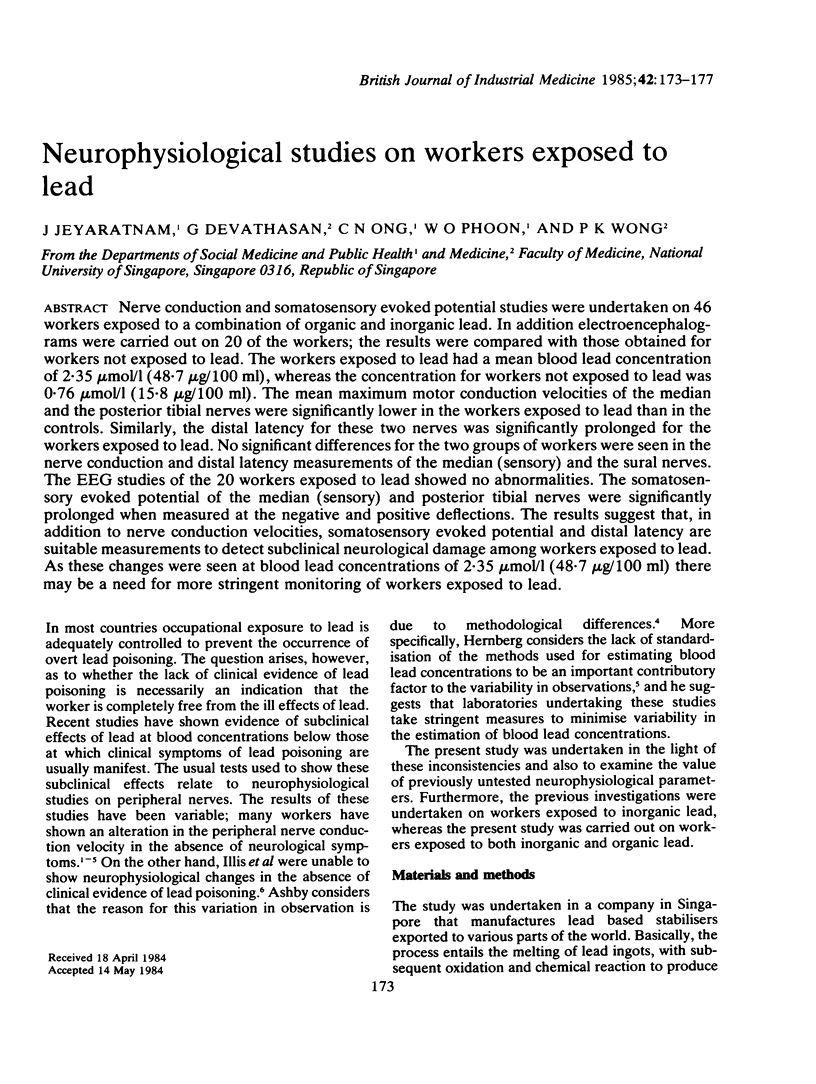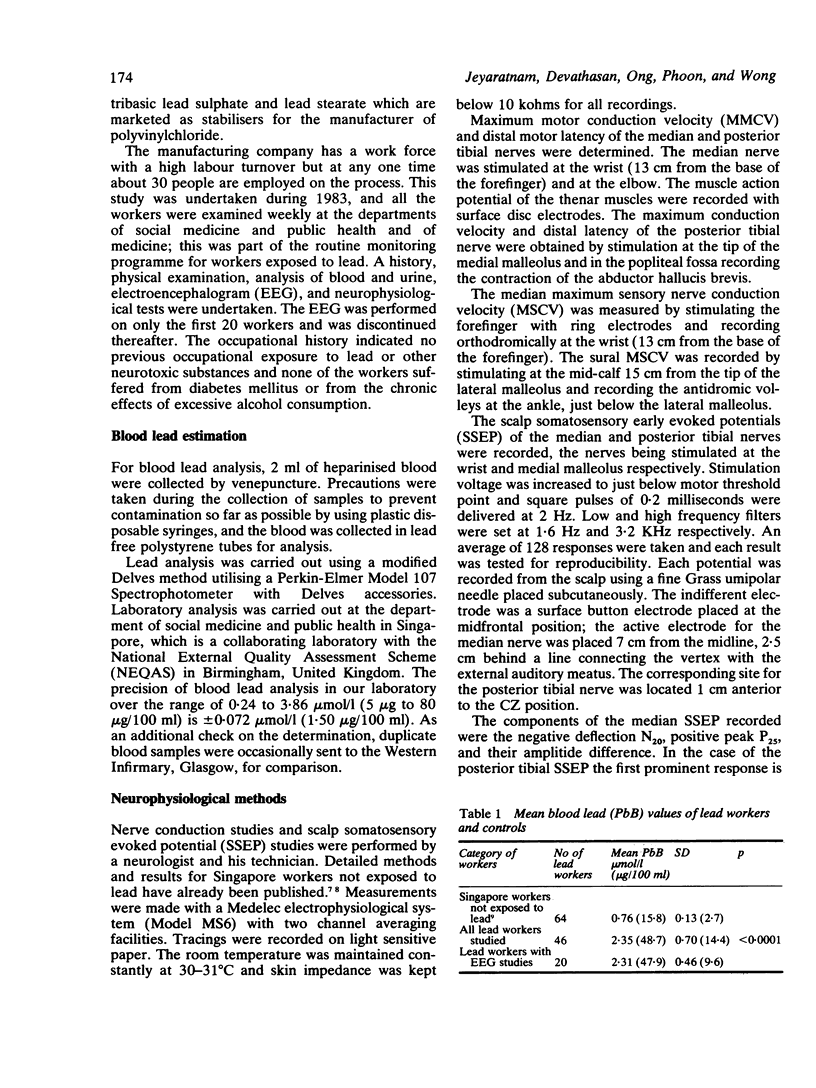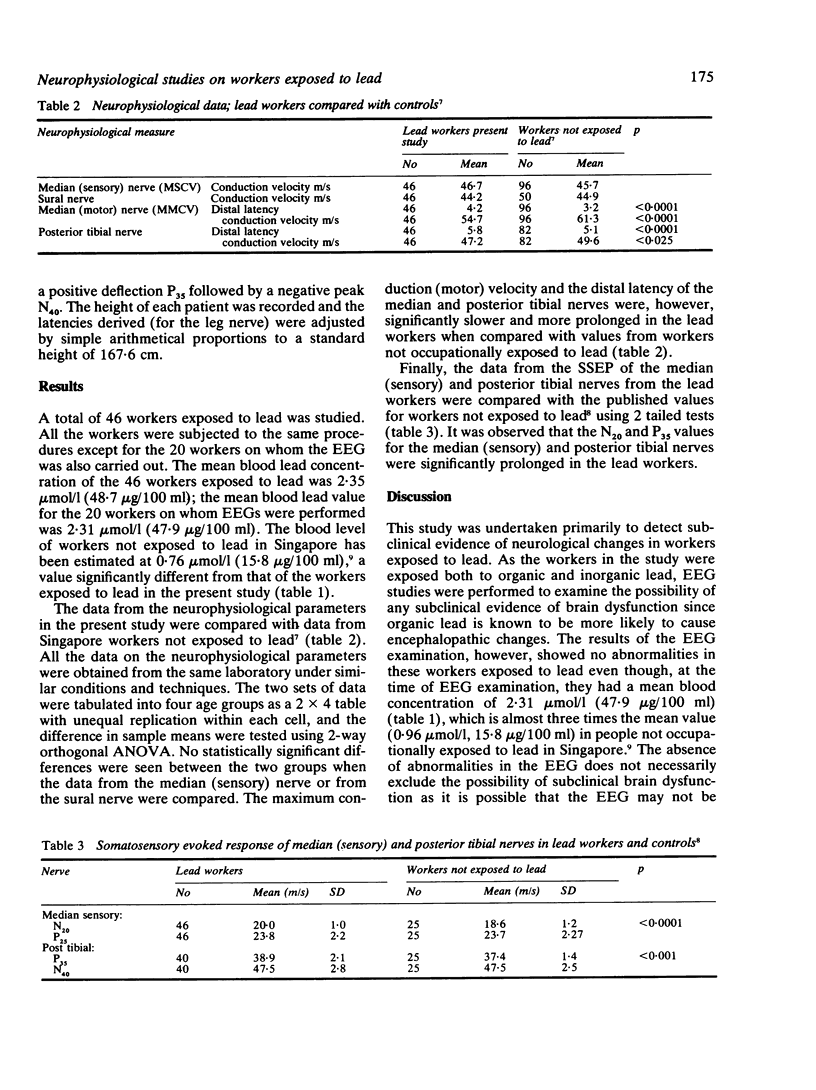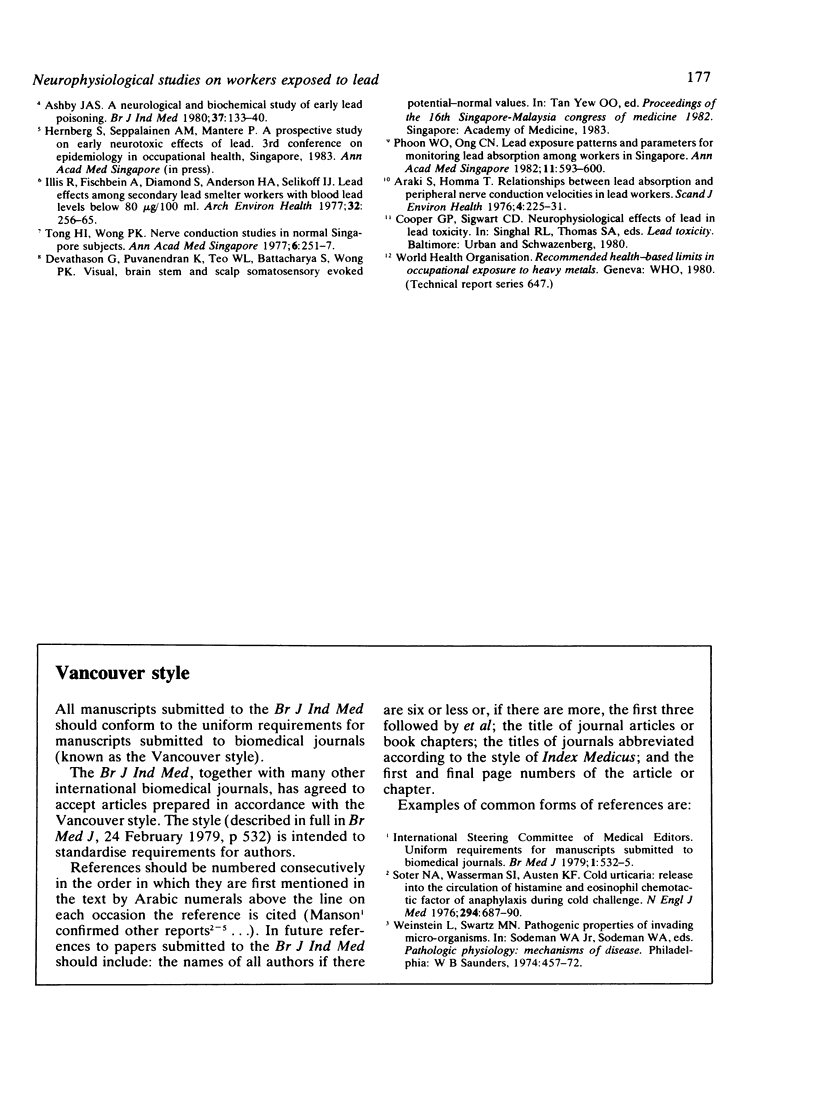Abstract
Nerve conduction and somatosensory evoked potential studies were undertaken on 46 workers exposed to a combination of organic and inorganic lead. In addition electroencephalograms were carried out on 20 of the workers; the results were compared with those obtained for workers not exposed to lead. The workers exposed to lead had a mean blood lead concentration of 2.35 mumol/l (48.7 micrograms/100 ml), whereas the concentration for workers not exposed to lead was 0.76 mumol/l (15.8 micrograms/100 ml). The mean maximum motor conduction velocities of the median and the posterior tibial nerves were significantly lower in the workers exposed to lead than in the controls. Similarly, the distal latency for these two nerves was significantly prolonged for the workers exposed to lead. No significant differences for the two groups of workers were seen in the nerve conduction and distal latency measurements of the median (sensory) and the sural nerves. The EEG studies of the 20 workers exposed to lead showed no abnormalities. The somatosensory evoked potential of the median (sensory) and posterior tibial nerves were significantly prolonged when measured at the negative and positive deflections. The results suggest that, in addition to nerve conduction velocities, somatosensory evoked potential and distal latency are suitable measurements to detect subclinical neurological damage among workers exposed to lead. As these changes were seen at blood lead concentrations of 2.35 mumol/l (48.7 micrograms/100 ml) there may be a need for more stringent monitoring of workers exposed to lead.
Full text
PDF




Selected References
These references are in PubMed. This may not be the complete list of references from this article.
- Araki S., Honma T. Relationships between lead absorption and peripheral nerve conduction velocities in lead workers. Scand J Work Environ Health. 1976 Dec;2(4):225–231. doi: 10.5271/sjweh.2800. [DOI] [PubMed] [Google Scholar]
- Ashby J. A. A neurological and biochemical study of early lead poisoning. Br J Ind Med. 1980 May;37(2):133–140. doi: 10.1136/oem.37.2.133. [DOI] [PMC free article] [PubMed] [Google Scholar]
- Catton M. J., Harrison M. J., Fullerton P. M., Kazantzis G. Subclinical neuropathy in lead workers. Br Med J. 1970 Apr 11;2(5701):80–82. doi: 10.1136/bmj.2.5701.80. [DOI] [PMC free article] [PubMed] [Google Scholar]
- Lilis R., Blumberg W. E., Fischbein A., Eisinger J., Diamond S., Anderson H. A., Selikoff I. J. Lead effects among secondary lead smelter workers with blood lead levels below 80 microgram/100 ml. Arch Environ Health. 1977 Nov-Dec;32(6):256–266. doi: 10.1080/00039896.1977.10667292. [DOI] [PubMed] [Google Scholar]
- Phoon W. O., Ong C. N. Lead exposure patterns and parameters for monitoring lead absorption among workers in Singapore. Ann Acad Med Singapore. 1982 Oct;11(4):593–600. [PubMed] [Google Scholar]
- Seppäläinen A. M., Hernberg S. Sensitive technique for detecting subclinical lead neuropathy. Br J Ind Med. 1972 Oct;29(4):443–449. doi: 10.1136/oem.29.4.443. [DOI] [PMC free article] [PubMed] [Google Scholar]
- Seppäläinen A. M., Tola S., Hernberg S., Kock B. Subclinical neuropathy at "safe" levels of lead exposure. Arch Environ Health. 1975 Apr;30(4):180–183. doi: 10.1080/00039896.1975.10666672. [DOI] [PubMed] [Google Scholar]
- Soter N. A., Wasserman S. I., Austen K. F. Cold urticaria: release into the circulation of histamine and eosinophil chemotactic factor of anaphylaxis during cold challenge. N Engl J Med. 1976 Mar 25;294(13):687–690. doi: 10.1056/NEJM197603252941302. [DOI] [PubMed] [Google Scholar]


